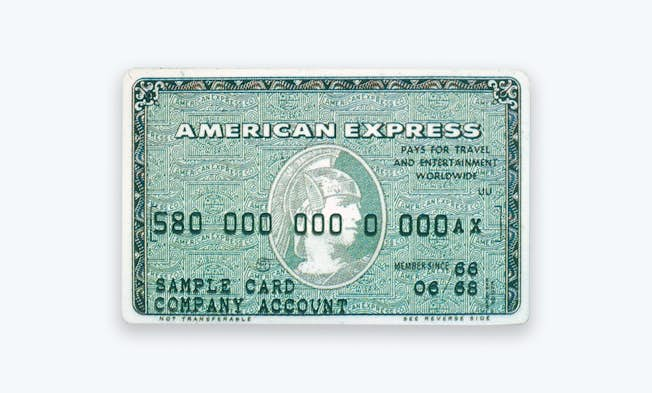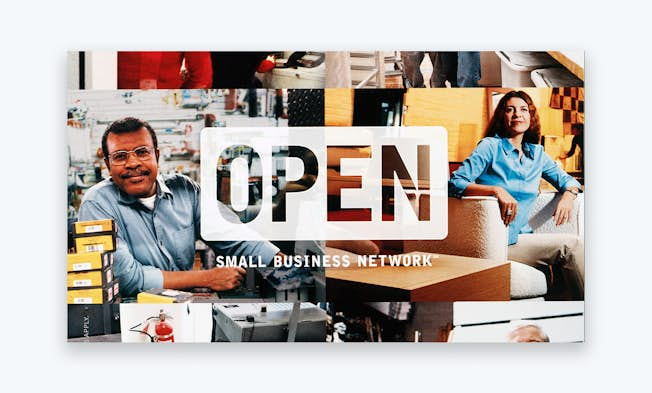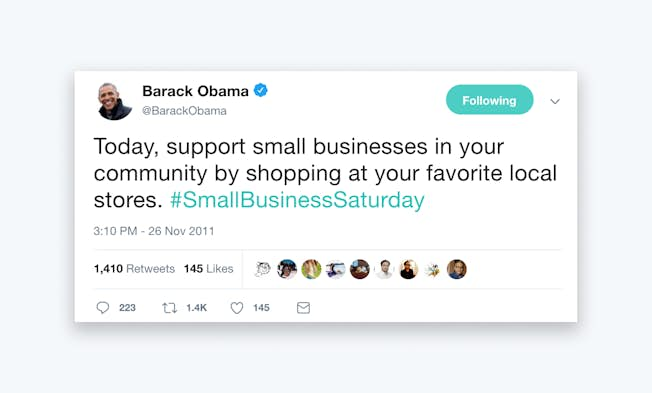Dec 21, 2018
American Express: Banking on Success with Creative Initiatives
With nearly 170 years of heritage, American Express (also known as Amex) is one of the most respected, most recognizable and most valuable brands in the world. Amex actually began as a travel services company specializing in freight forwarding, not as a financial services firm.
Over the years, it has managed to set itself apart from other financial services companies – even with a steadfast competitive set. Serving as credit card issuer, network and bank holding entity, Amex’s brand has to be weighted differently because of its ability to issue its own card products without partnership with other banks.
Since its inception, Amex steadily built a brand on the foundation of reliability and outstanding customer service, consistently innovating its product offerings based on consumer needs. Though best known for its credit card offerings, Amex didn’t even introduce a card until 1950, a century after its founding.
So let’s walk through Amex’s evolution and dive deeper into how it developed into one of the most revered digital brands.

Building the Amex Brand
After its founding in 1850, American Express earned a reputation as a company people could trust to transport some of their most valuable possessions. Some 40 years later, Amex entered financial services through the introduction of traveler’s cheques.
Its service soon extended beyond transactions with the erection of offices around the world that became “homes away from home” for its customers. Perhaps this provided the insights to form Amex’s popular airport lounges (one of the brand’s key differentiating benefits).
In the 1950s, Amex launched their first charge card and introduced the iconic “Member Since” date, adding a sense of prestige and exclusivity to the brand. The Member Since date has since become a badge of honor for their card members.
Then, after over a decade of serving both consumers and business owners with the same product, American Express began offering the corporate card in 1966. The “business traveler” soon became the company’s marquee card holder, paving the way for global expansion. Amex later dedicated themselves to supporting small businesses by establishing the Small Business Partnership in 1987 (renamed OPEN in 2002) and founding Small Business Saturday in 2010.
With an eye towards long-term growth, American Express realized customer loyalty was necessary for sustaining the business, and that cultivating a feeling of aspiration would bode well for obtaining new customers. Thusly, Membership Rewards®, originally named Membership Miles®, launched in 1991 and redefined loyalty in the payments industry.
Ten years later, Membership Rewards® was the world’s largest card-based rewards program, and remains so today. Allowing card members to pay with MR points at various retailers online and offline is just one of the many ways Amex pushed itself to the forefront of digital innovation.
As you can see, through Amex’s evolution three tenets remained constant: trust, support and innovation.

Impact on the Zeitgeist – Artwork, Slogans and Campaigns
Now let’s delve into how they leveraged these tenets to establish a strong brand identity through impactful marketing practices.
Introduced in 1975, Amex’s blue box logo is one of the most easily attributable brand images globally. Together with the Centurion bust and its iconic Green Card (embossed with the Member Since date), it’s safe to say there is a strong visual identity.
One of the keys to becoming a top brand is being recognizable and memorable – consistent use of logos with brand messaging is a simple way for consumers to quickly identify your brand and experience the feelings that your brand represents, hopefully creating increased brand affinity. In Amex’s case, when consumers see the Blue Box with its unique typeface, they likely are reminded of the aforementioned tenets of trust, support and innovation, which hopefully encourages them to become or remain a customer of the brand.
One of the ways to deliver memorable brand messages is through use of slogans, and Amex achieved one with “Don’t Live Life Without It”, introduced in 1975. This solidified its impact on the cultural fabric of the US, and even across the globe, being named one of the top 8 most successful ad campaigns of all time by Investopedia with the likes of Nike’s “Just Do It” and Apple’s “Think Different”.
The best taglines and advertising invoke an emotional response, whether it be hopefulness, inspiration, anger, sadness, sympathy, empathy or happiness. Good advertising should make you want to change your behavior or even your life – and should always ultimately make you feel something about the brand.
Like other major brands, Amex has leveraged talent and spokespeople over the years to help get into the hearts and minds of their desired consumers. Athletes, actors, musicians and more have appeared in ads for American Express over the years. Aligning the brand with aspirational people helped contribute to an overall air of prestige surrounding it.
Having an Amex card became a status symbol, and when the invite-only Centurion Card launched in 1999 (commonly referred to as the “Black Card”) it quickly propelled Amex even higher into the upper echelon of aspirational brands. However, becoming one of the most highly touted status symbols for celebrities, the Black Card almost had a negative effect on the brand as a whole, making it seem unrelatable and unattainable… out of the everyday consumer’s league.
Lavish lifestyles, once revered, came crashing to a halt with the economic crisis of 2008. With all of the major financial services companies under intense scrutiny, there was suddenly a dark cloud over American Express with no sun in sight. In 2010, however, Amex found a way into the light by establishing Small Business Saturday® – a consumer call-to-action to ‘Shop Small®’ and help rebuild small businesses across a nation which had been severely impacted by the economic crisis.
This was a great message that everyone could get behind, and a nice way to counterbalance the heavy consumerism happening on Black Friday at big box retailers. It quickly took on a life of its own, adopted in small towns and big cities across the US with the help of local government officials and supported right on up to the White House.
There is no doubting the incredible impact that the American Express brand has had on the culture at large. Amex has proved over and over again that it was willing and able to not only meet, but anticipate consumer needs. So when consumers suddenly received a new playground in the form of the Internet, Amex had to quickly rise to the challenge and expand their sphere of influence beyond traditional media, and figure out how best to serve their customers and prospects in the digital space.

Becoming the Cream of the Digital Crop
In 2007, American Express launched OPENForum.com, which aimed to help small business owners by offering tools and hosting insightful and engaging content about the many facets of running a business. Partnering with publishers such as Inc. Magazine and Mashable, OPEN Forum was a hybrid advertising/guest blogging/in-house editorial operation and fostered a community around entrepreneurship. It was intentionally social and was demonstrative of the company’s larger commitment to supporting its card members and small businesses.
Two years later in 2009, Amex created its first social media presences on Twitter and Facebook with the primary goal of providing customer service to its card members in a more real-time fashion. American Express debuted on Twitter with the @AskAmex handle and the official American Express Facebook Page came soon after along with a series of amazing social innovations.
In 2011, American Express introduced a first-of-its-kind card sync technology, which allowed card members to securely connect their cards to their social media accounts. Amex Sync first launched with Foursquare and then an evolved version came as a fast follower on Facebook in the form of the “Link, Like, Love” app, which enabled a user to access deals based on brands that he or she ‘likes’ on Facebook, after syncing their Amex card of course.
At SXSW 2012, Amex launched Sync for Twitter and offered up Jay-Z tickets for SXSW attendees who completed the sync. Not at SXSW? No problem – card members at home could watch the livestream and tweet to get access to special camera angles and other features. Awesome, right?! This was actually the campaign that caught my eye as a marketer, card member and Jay-Z fan, inspiring me to want to work for the company’s social media team.
The syncing capability continued to evolve, and through partnerships with retailers such as Whole Foods, McDonald’s and Best Buy, synced card members could tweet strategic branded hashtags to add special promos directly onto their cards. For example, after tweeting the hashtag #AmexWholeFoods, a card member would receive a $20 statement credit when they completed a purchase of $75 or more at Whole Foods using their synced card. This new social commerce experience unlocked a previously hidden power of the hashtag and leveraging Amex’s closed-loop business model, adding value to both card members AND merchants – a win-win.
American Express later evolved the sync technology even further through a partnership with TripAdvisor. Card members in Australia, the UK and US could securely sync their cards with their TripAdvisor profiles and unlock trusted reviews, hotspots and transactions from other card members, effectively creating a valuable global community of Amex card members who provide relevant, contextual travel insights.
True to its heritage of supporting small businesses, Amex partnered with Twitter to open up the platform’s self-serve advertising platform to its card members, giving $100 in free advertising to the first 10,000 businesses to sign up. Amex also teamed up with Facebook to give five small businesses a Facebook makeover and $20,000 to grow their businesses. Facebook also helped enable American Express card members have the ability to pay for ads on the platform with Amex Membership Rewards® points.
The partnerships extended beyond just Twitter and Facebook – in 2010 American Express launched “Unstaged”, a livestreamed concert experience exclusively viewable on YouTube and Vevo. Now, Amex has long employed a strategy of partnering with entertainment entities tied to card member passion areas in order to provide enviable experiences. Examples include the US Open tennis, Tribeca Film Festival, NBA games, New York Fashion Week, and more.
However, it was important to make sure these experiences were: 1. Cool enough to inspire card member envy (inspiring more people to want to apply for a card); and 2. Cool enough to share in social media.
There was also a challenge of scaling and democratizing the often intimate/exclusive card member experiences without diminishing the need to have an Amex card to have access to these events. ‘Unstaged’ was the answer to all of these challenges. Card members got exclusive access to an intimate show with a big-name artist (hopefully tweeting along as well, saying how cool the experience was), and prospects got to watch the livestream via YouTube and Vevo with envy, but still unlock cool goodies by actively tweeting and posting online during the show. Done and done.
Over the years, American Express added more bells and whistles to the ‘Unstaged’ digital experience, eventually partnering with Taylor Swift to create a first-of-its-kind 360° interactive game to accompany her video for the major international hit ‘Blank Space’.
The NBA has also proved to be a great partner for innovation in social media, allowing American Express to leverage NBA channels in addition to Amex’s, to host unique content series and fun viral-worthy moments such as #TeammateShake, broadening the reach and relevance of the content.
To this day, Amex continues their tried-and-true strategy of using premier events to create amazing in-person experiences that card members are proud to capture and share across their social media channels, evolving the strategy by leveraging influencers to help put a megaphone and microscope on these shareable moments and bring the card member benefits to life in an authentic, relatable way.
The Brand’s Future and Key Takeaways
So what lies ahead for American Express? With the recent launch of its new Global Brand Strategy, there’s a concerted effort to unify the look, feel, voice and tone of Amex worldwide. This new strategy and messaging is being deployed in all aspects of the company’s marketing, including digital and social media.
Partnerships will continue to play a key role in the digital innovation of the brand – newer digital players like Uber and Airbnb help provide competitive benefits for Amex card members and American Express’ roster of media publisher partners such as BuzzFeed continues to grow. As mobile devices introduce new functionality, Amex will continue to figure out ways to stay with and ahead of the curve as they’ve done with mobile payments/wallets and never-been-done features like Pay It Plan It.
You might be wondering how a brand with its origins in the mid-19th Century continues to be hyper-relevant in an increasingly digital world. The answer is simple: keep consumers at the core of your strategy, commit to innovation even if you’re leading the competitor set, and invest the resources. Oh, and having a good product/service doesn’t hurt!
Upgrade to Power Membership to continue
your access to thousands of articles, toolkits, podcasts, lessons and much much more.
Become a Power Member- Login
- View Courses
- - - -
- Courses
- Resources
- - - -
- My Account
- Change Password
- Logout





